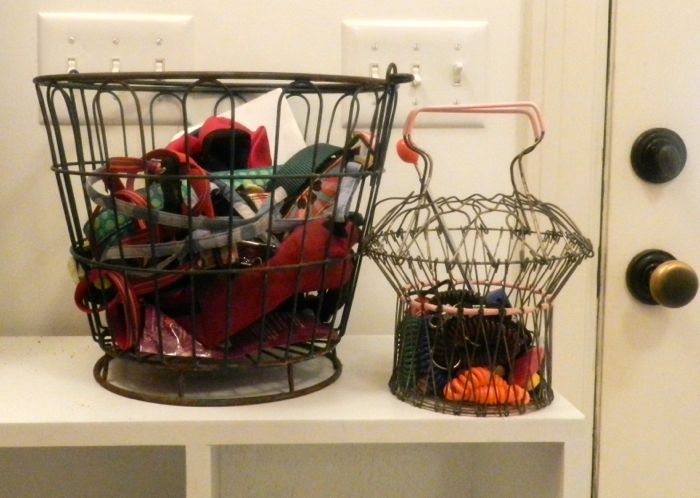As much as I like chickens, I don’t think I’d keep them if I didn’t get eggs. Collecting eggs is part of the experience. Cooking with the eggs, giving a carton as a gift and selling a dozen now and then, is inextricably linked to the experience of caring for and interacting with these animals. These are, after all domestic farm animals, with a purpose. That’s not to say to say that I expect the hens to be laying machines, and that each chicken has to lay an egg each day to earn her keep. That’s totally unrealistic. And you already know that I have a soft spot for the old, retired girls. Still, eggs are an essential part of the picture, and as such most people who go into backyard chicken keeping want to know how many chickens they should get in order to have enough eggs.
I can’t tell you how many hens you need in order to have eggs to supply your table. First of all, the more eggs you have, the more you eat! You might think that two eggs a day is plenty, and then you start eating eggs everyday for breakfast. Secondly, how many eggs your hens make depends on many factors, including their breeds, time of year, and their age. Still, let’s run through the numbers.
My pen of Gems is typical of a backyard flock. There are a variety of breeds. Some are known for their egg laying ability, like the Rhode Island Reds, and others go broody (those Orpingtons!) or are mostly decorative, like Pearl, the Cochin. They are now one year old, and so in the prime of their laying lives.

Summer, with it’s long sunny days and warm temperatures, is the peak laying season. In this almost-over month of July my twelve young hens have provided me with 225 eggs. That’s about 7 or 8 a day. That’s 18 cartons of eggs.
By August some chickens will begin to molt, and by September they’ll all be shedding feathers and taking a break from laying. I’ll find a few eggs in the nesting boxes, but not many. There might be a stretch of a few weeks when I find no eggs at all in the barn. By February they’ll start laying again, but in their second year they’ll produce about 20% fewer than the year before. And so it goes. By the fourth year several hens will have died and the remaining hens will be laying sporadically.
But for now, there is a surplus of eggs in the refrigerator.

Friends and neighbors give me used, clean cartons, which I use to store the eggs. I appreciate that, as new egg cartons can cost anywhere from 40¢ to 60¢ each. My eggs go into the refrigerator clean (for more about egg handling and storing see this FAQ) but if the cartons get even a tad dirty or worn, they go into the recycling bin. I write the date the eggs are collected on each carton. If I don’t do this, I lose track. I set aside a dozen to hard-cook later, and I make sure that the eggs that I sell are the freshest.
Today I’m visiting a friend. I’m bringing her a half-dozen. I package the eggs in new, clear plastic cartons both when I give eggs as gifts, and when I sell them. I carefully select a variety of shapes and colors. I make sure they’re clean and perfect. (I keep and use the eggs with imperfections.) This is what the carton looks like when it leaves my house.

Even after all of these years, I still get a small thrill when I share the bounty from my flock with others. So, back to the question of “how many hens do I need?” My own answer is that I want to have eggs for my table and some to share with others. At the same time, I’m not keeping chickens just for the eggs. If I did, then I’d have all look-alike hybrids, and cull them at 18 months. I like having a flock that is small enough so that I know each hen, and in which there is a variety of plumage and egg color and personality. I want the flock big enough so that there’s always a dozen eggs in the refrigerator with a few extra to be generous with. I’ve found that a laying flock of around eight to a dozen hens gives me this balance. I’m lucky that I have the space to keep my elderly chooks. By the time the old hens are gone, the Gems will be retired and I’ll get chicks again. Production waxes and wanes. It makes me appreciate those cartons in the fridge when I have them.




















